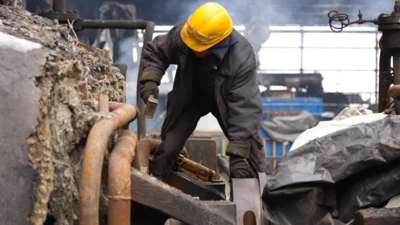We've updated our Privacy and Cookies Policy
We've made some important changes to our Privacy and Cookies Policy and we want you to know what this means for you and your data.
The seismic signal of Lionel Messi
Top Stories
- Author, Jonathan Amos
- Role, łÉČËżěĘÖ Science Correspondent, Vienna
When Lionel Messi scores another wonder strike, the city of Barcelona literally shakes.
Scientists have a seismometer installed close to the Camp Nou stadium and it picks up the telltale vibrations every time the crowd celebrates a goal.
There is a clear spike in the data as fans jump up and down.
And the seismogram that perhaps best captures this is Barça's "miracle comeback" against Paris Saint-Germain in last season's Champions League.
Four-nil down from the Round 16 first-leg, the team scored a last-minute goal to claim a famous 6-5 aggregate victory at home.
Top Stories
The wild delight of supporters is writ large.
Top Stories
Messi magic
Image source, ICTJA-CSIC
This soccer seismology has been discussed here at in Vienna, Austria.
It is the work of Jordi DĂaz and colleagues at the Institute of Earth Sciences Jaume Almera in Catalonia's capital.
What Dr DĂaz finds fascinating is the contrast in crowd signal between the movements of sports fans and those of music fans.
'Dancing in the Camp Nou' with Bruce Springsteen
Image source, ICTJA-CSIC
The Camp Nou also hosts rock concerts. Bruce "The Boss" Springsteen played the venue in 2016.
"The spectrogram shows time versus frequency; the colours are for energy," Dr DĂaz explained.
"You can see that every song has a particular pattern, and you can identify from the seismic data when [Springsteen] moves from one song to another.
"But notice how in goal celebrations, the energy is distributed across the 1-10Hz band while in the rock concert you have what we call harmonic structures; energy is localised into precise amplitudes.
"This is because people are not jumping; they are dancing. It's rhythm."
Dr DĂaz's broadband seismometer is positioned 500m from the stadium in the institute's basement.
At first, it was just an outreach project - something to help get the public enthused about his branch of science. But then his research group started to notice some interesting features that prompted genuine inquiry.
As well as following those Barça home games, the scientists are looking at the seismic patterns of traffic. A major avenue runs past the institute and it is possible to track the daily flow of vehicles, even detect the constant stop-start as the traffic lights run through their cycle.
The same is true for the subway and the timetable of train services.
"It may have started out as fun but we are now exploring the scientific aspects," Dr DĂaz told łÉČËżěĘÖ News. "One is to do with engineering, knowing things about how structures and buildings vibrate due to different movements of people. We're now contacting the engineering schools to see if there is some potential in this."
Jonathan.Amos-INTERNET@bbc.co.uk and follow me on Twitter:
Top Stories
More to explore
Most read
Content is not available








